Family Tyrannidae (Tyrant Flycatchers)
Eastern Kingbird
Great Crested Flycatcher
Eastern Phoebe
Eastern Wood Pewee |
Flycatchers are known for their tendency
to return to the same perch after flying out to catch insects in mid-air.
This behavior is called 'hawking'. This is a large group, and there are
several other species that occur in South Carolina; however, they use
habitats that are not present on Furman's campus. An exception is the
Acadian Flycatcher, which may eventually be seen at Furman. |
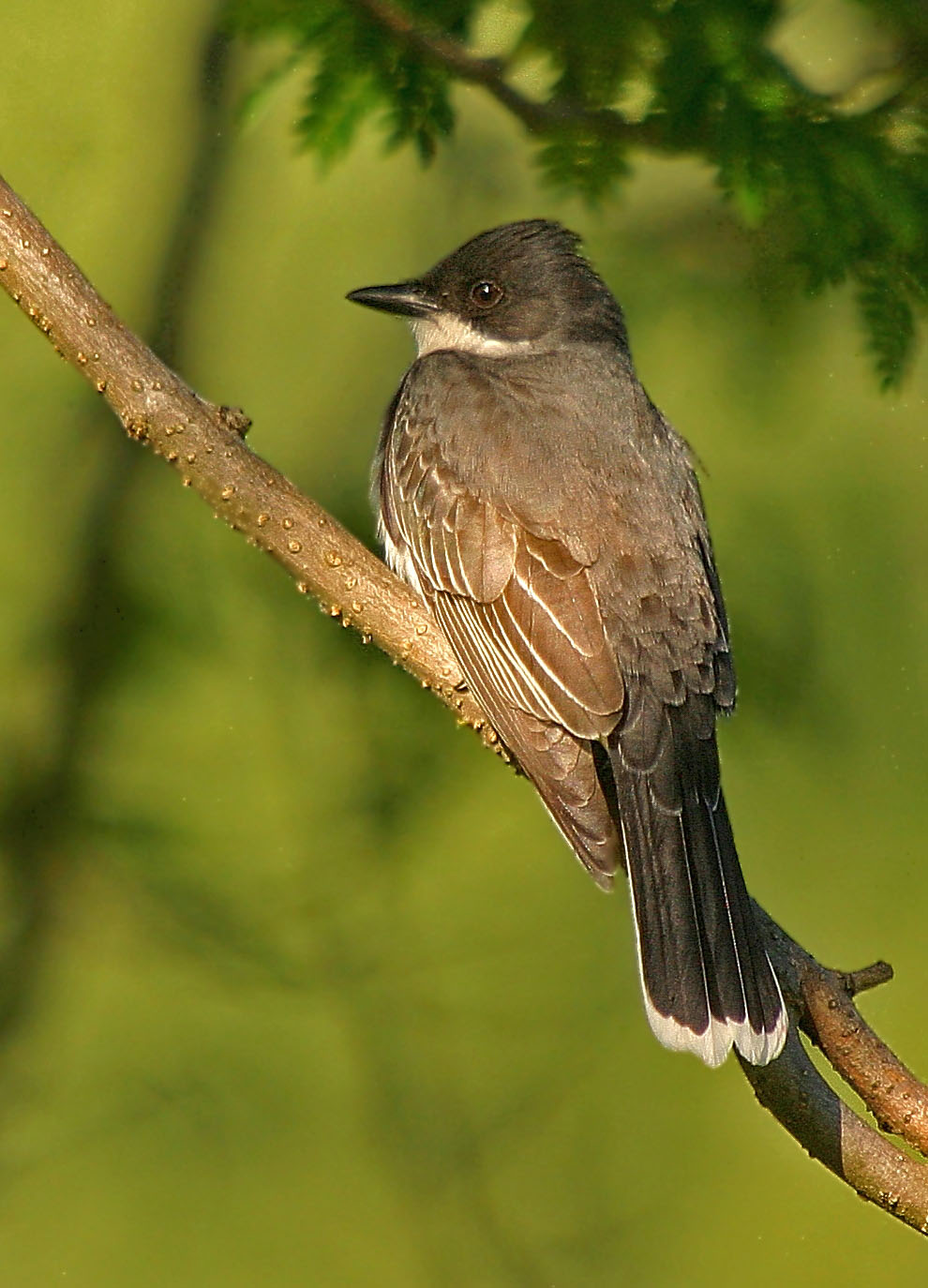 |
Family Paridae (Titmice)
Carolina Chickadee
Tufted Titmouse |
These gregarious little birds are perhaps the most common woodland
inhabitants on campus. Their many different vocalizations fill the woods
each day from sunrise to sundown throughout the year. Carolina Chickadees,
like the one pictured at right, are closely related to Black-Capped
Chickadees, their Northern counterparts. The two are nearly identical,
with the black-capped variety being only slightly bigger and showing a
little more white coloration on the primary wing feathers. |
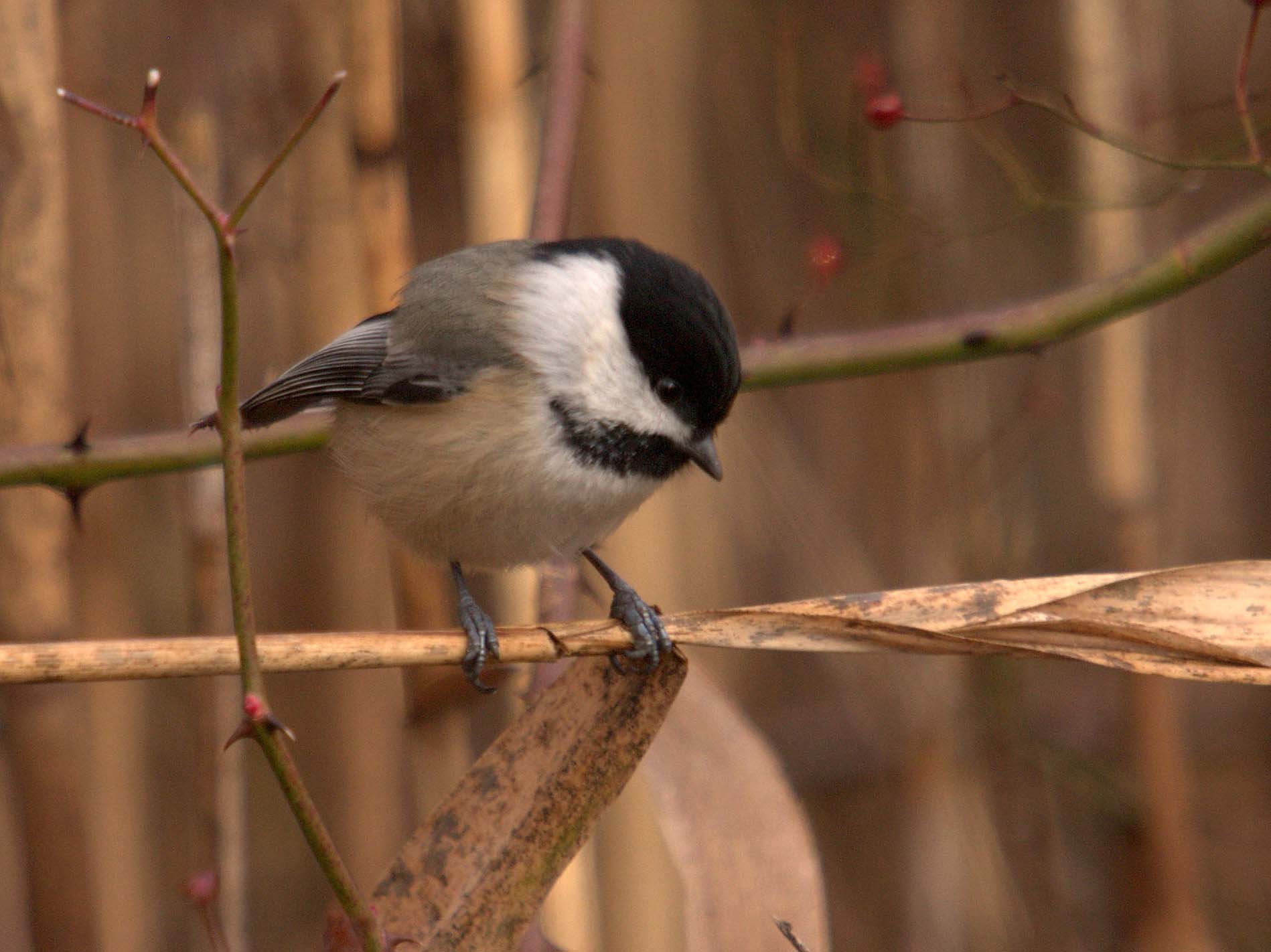 |
Family Troglodytidae (Wrens)
Carolina Wren
House Wren
Winter Wren |
While usually preferring to remain close to
the ground during their normal activities, wrens have been known to build
nests almost anywhere. At Furman, Carolina Wrens have been spotted
building nests on anything from tractors to buildings. Pictured at right
is a Winter Wren. The ranges of other South Carolina Wren species do not
extend far enough west to make them expected species at Furman. |
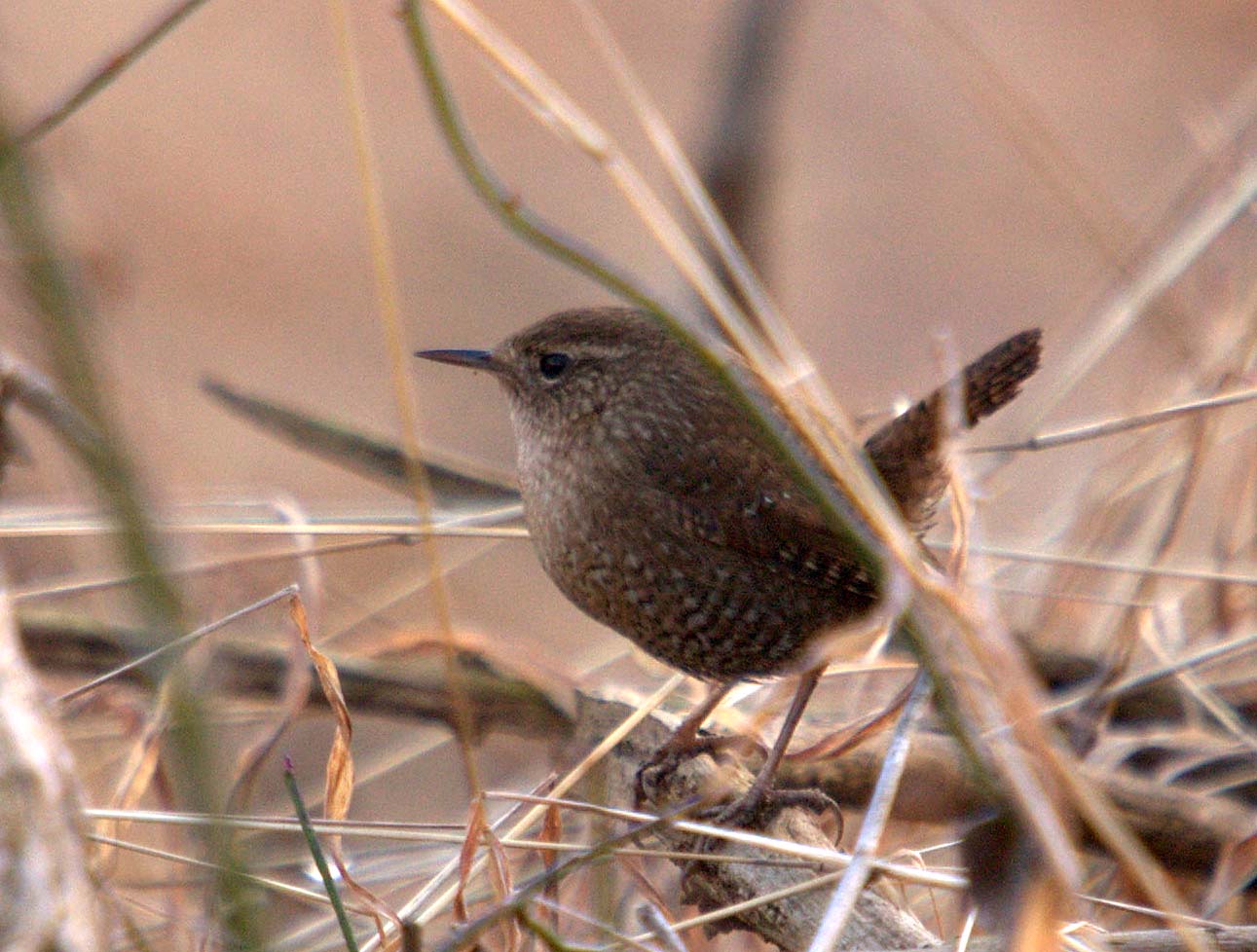 |
Family Mimidae (Mimic Thrushes)
Brown Thrasher
Gray Catbird
Northern Mockingbird |
Mimic Thrushes are among the most familiar birds on campus, due to their
suburban tastes. All three are common fixtures in even the busiest areas
of campus. No other mimic thrushes regularly occur in South Carolina.
Pictured at right is a Northern Mockingbird. |
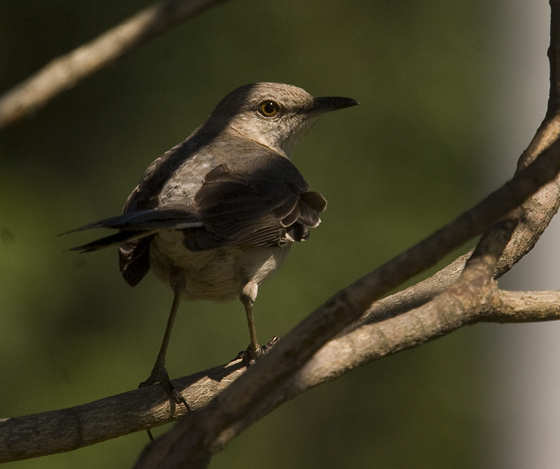 |
Family Turdidae (Thrushes)
American Robin
Eastern Bluebird
Hermit Thrush
Wood Thrush
Swainson's thrush
|
All three "brown thrushes" that occur on campus, including the Hermit
Thrush, Wood Thrush, and Swainson's Thrush, are season-specific visitors.
Two other brown thrushes, the Veery and the Gray-Cheeked Thrush, are
potential visitors to campus but have never been observed. Pictured at
right is an Eastern Bluebird. |
 |
Family Sylviidae (Kinglets)
Blue-gray Gnatcatcher
Golden-crowned Kinglet
Ruby-crowned Kinglet |
Kinglets and Gnatcatchers are among the smallest birds on campus, with
energy levels rivaled only by the Ruby-throated Hummingbird. These birds
are often seen restlessly flitting around the tree tops. No other kinglet
species reside in the Eastern United States. Pictured at right is a
Blue-gray Gnatcatcher. |
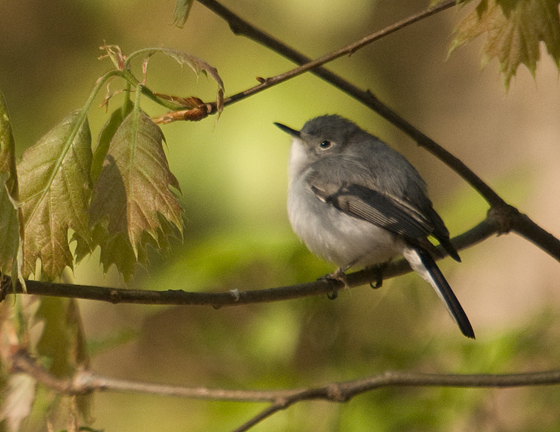 |
Family Bombycillidae (Waxwings)
Cedar Waxwing
|
Often deemed one of the most beautiful North American birds, waxwings
literally flock to campus each fall in search of nutrient-rich berries.
They stay until early summer. The other North American species of waxwing,
the Bohemian Waxwing, generally stays north of the Mason-Dixon Line. |
 |
Family Sturnidae (Starlings)
European Starling |
As
the name implies, European Starlings are not native to the United States.
They were first introduced in New York towards the end of the nineteenth
century, and have since spread to occupy the greater portion of the
contiguous states. These birds are often berated by birders because of the
fierce competition they create for many native species. |
 |
Family Vieronidae (Vireos)
Blue-headed Vireo
Red-eyed Vireo
White-eyed Vireo
|
Vireos, along with warblers, are some of the more elusive species on
campus. They primarily stay in the tree tops, and are heard far more often
than they are seen. Yellow-throated Vireos are potential visitors to
campus. Pictured at right is a Red-eyed Vireo. |
 |
Family Parulidae (Wood Warblers)
Black-and-white Warbler
Northern Parula Warbler
Yellow Warbler
Magnolia Warbler
Cape May Warbler
Black-throated Blue Warbler
Black-throated Green Warbler
Yellow-rumped Warbler
Chestnut-sided Warbler
Blackpoll Warbler
Pine Warbler
Palm Warbler
Common Yellowthroat
Hooded Warbler
Canada Warbler
Nashville Warbler
American Redstart
Orange-crowned
Warbler
Worm-eating Warbler
Louisiana Waterthrush
Northern Waterthrush |
These colorful creatures fill the Furman
woods twice a year, a phenomenon that always seems to happen overnight.
These birds prefer the safety of the deep woods during their brief stay en
route to either the far north or the far south (depending on the season).
So far, 21 species have been recorded on campus, but its probably safe to
say that at least a few more have made quick appearances. There are 41
species of Warbler that live in the Eastern United States. In the spring,
most males don bright plumages, which they molt in the fall. Pictured at
right, from top to bottom, are: male American Redstart in breeding
plumage, Pine Warbler, and Chestnut Warbler in breeding plumage. |
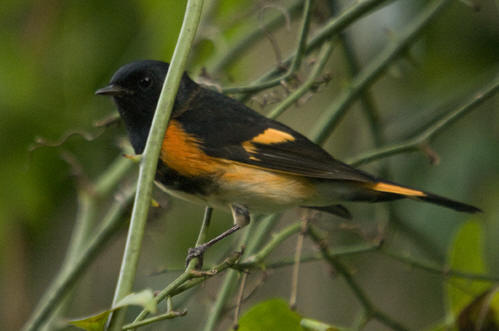 |
 |
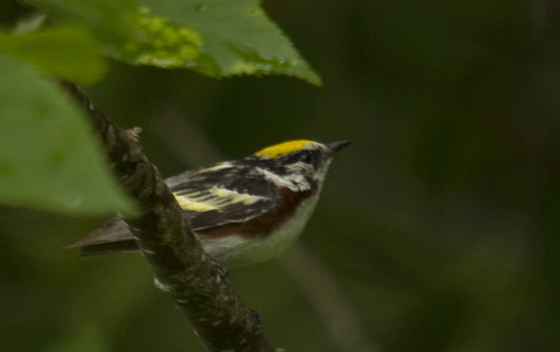 |
Family Icteridae (Blackbirds
and Orioles)
Baltimore Oriole
Orchard Oriole
Brown-headed Cowbird
Common Grackle |
Most Icterids prefer open areas, such as meadows and fields. Those found
at Furman are generally the more adaptable of this group, and are thus
somewhat of an exception to this rule. Red-winged blackbirds, Brewer's
Blackbirds, and Eastern Meadowlarks have all been seen within an hour's
drive of campus, but are not expected to occur at Furman. Rusty Blackbirds
have been seen within a half-mile of campus on the Swamp Rabbit Trail
(heading towards Greenville), but prefer swampy habitat, which isn't found
within the boundaries of campus. Pictured at right is a male Brown-headed
Cowbird. |
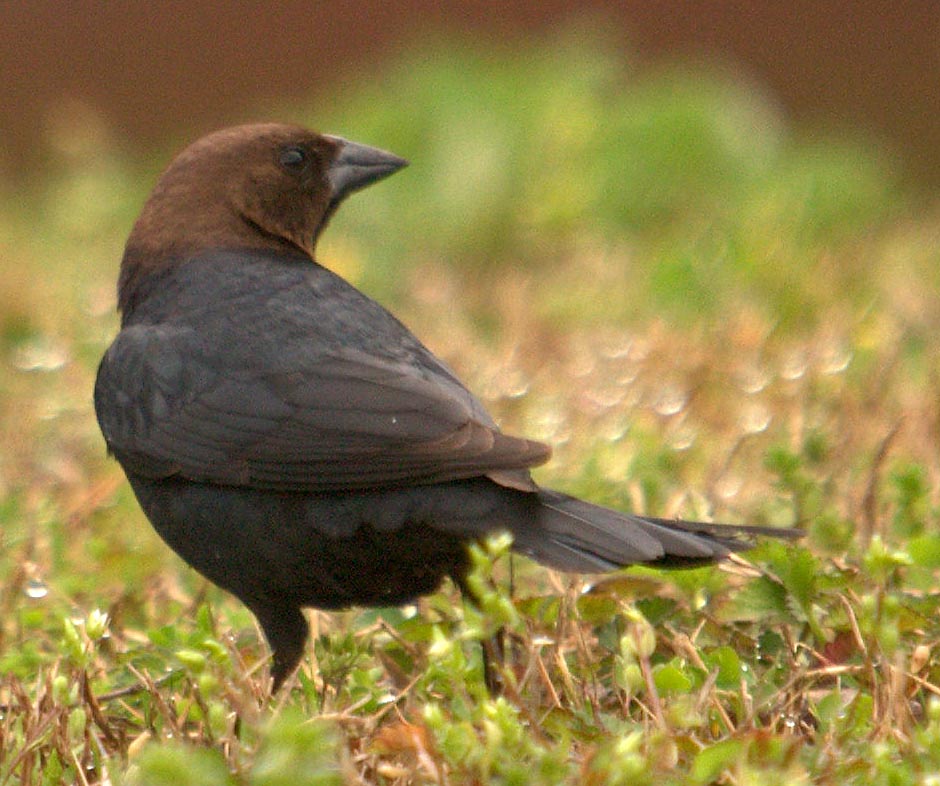 |
Family Thraupidae (Tanagers)
Scarlet Tanager |
Scarlet Tanagers are one of the brightest birds to visit campus. These
birds only stay for a few weeks in spring and fall, preferring more
temperate climates in summer and winter. Summer Tanagers are known to stay
farther southeast for the summer, but have yet to be recorded on campus. |
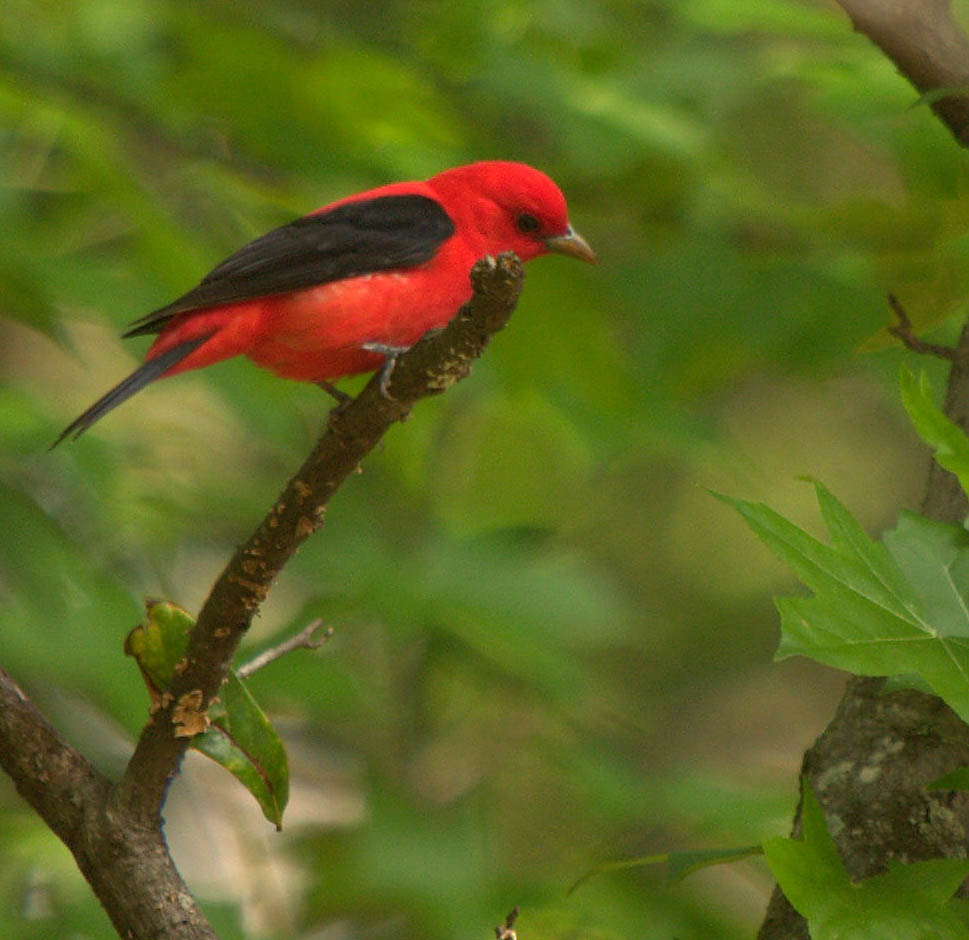 |
Family Fringillidae (Finches)
Northern Cardinal
Blue Grosbeak
Indigo Bunting
House Finch
American Goldfinch
Pine Sisken
Eastern Towhee
Dark-eyed Junco
Chipping Sparrow
Field Sparrow
White-throated Sparrow
Fox Sparrow
Song Sparrow |
Finches and Sparrows make up a large portion of the total bird population
on campus. Many of these birds prefer open areas, but can also be found at
the forest's edge. Furman is within range of several other Finch/Sparrow
species, and offers the right kind of habitat for many of them. Therefore,
there is a good possibility that several other species have made
appearances on campus. Pictured at right is a male House Finch. |
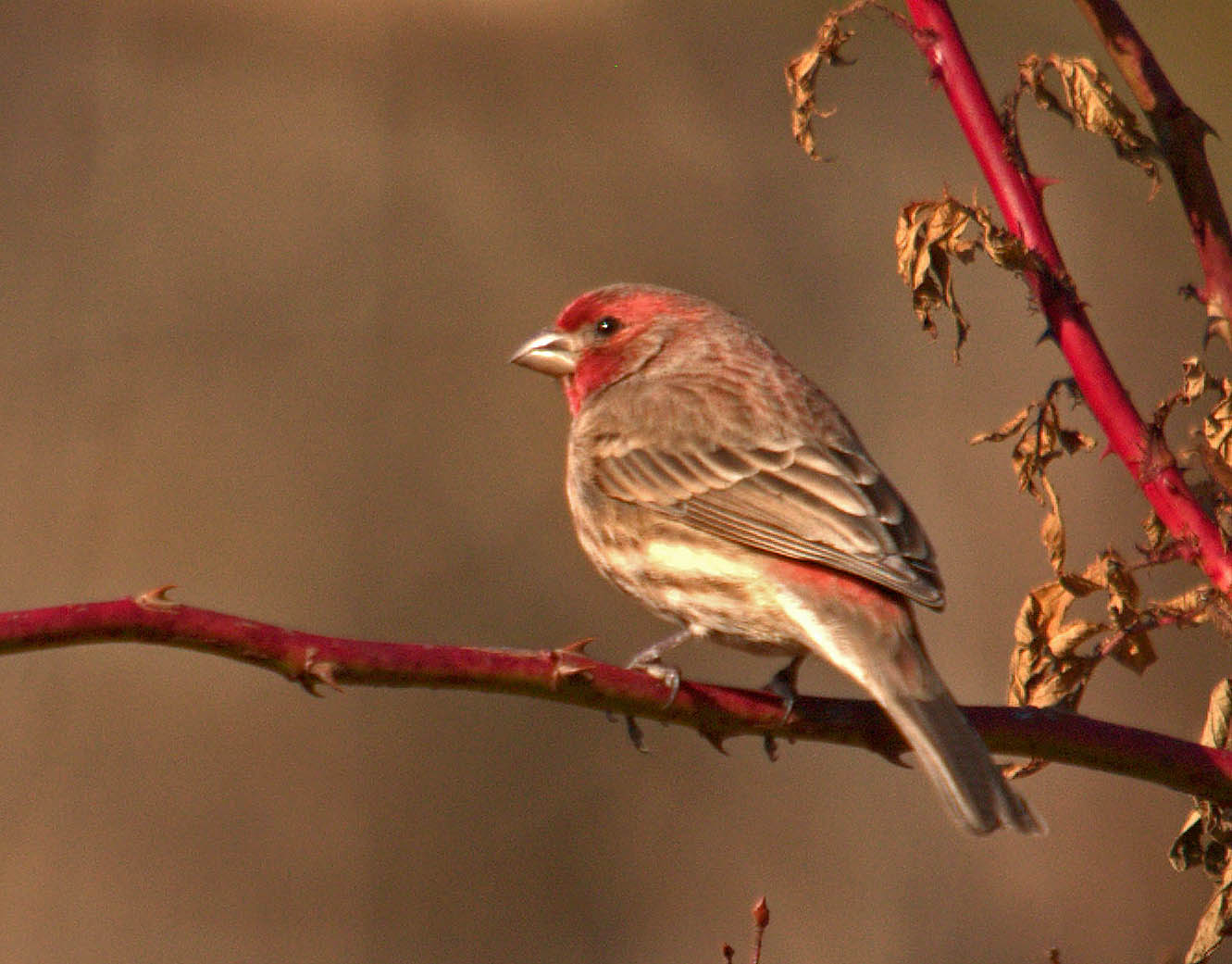 |
Furman University
• 3300 Poinsett Hwy • Greenville, SC 29613 •
|
